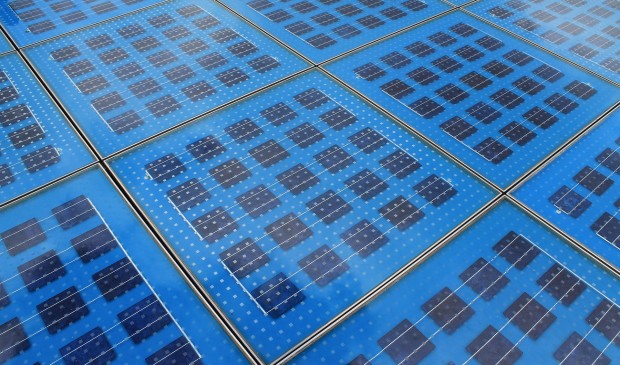Council committee asks for ambitious solar plan
Friday, August 28, 2015 by
Tyler Whitson Solar advocates have scored a minor victory in their push for Austin to invest heavily in solar energy and to do it fast.
The Austin Energy Utility Oversight Committee recommended Thursday that City Council direct staff to bring a plan forward for Council consideration by October that would involve the city investing in 600 megawatts of utility-scale solar capacity.
City spokesperson David Green told the Austin Monitor that, though it is unclear what the committee’s intent was as far as the timeline, staff will prepare plans that would achieve the goal by the ends of both 2016 and 2017 in anticipation of Council taking up the matter.
Whether to move forward with either of these plans will ultimately be up to Council.
Mayor Pro Tem Kathie Tovo and Council Members Delia Garza and Leslie Pool –all sponsors of the original resolution – voted against the item after the committee removed language that would have recommended that Council also set the investment level and deadline as a “policy goal.”
“The resolution I proposed, it does have more teeth,” said Garza.
Khalil Shalabi, Austin Energy’s vice president of energy market operations and resource planning, told the Monitor that utility staff will move forward with developing the plan, even though it is a recommendation from the committee and hasn’t yet gone to the full Council.
“I don’t need to wait for a resolution,” Shalabi said. “We’re working on it already. We already have numbers – we just need to update them and keep working on that.”
The move came after the Electric Utility Commission passed a motion on Aug. 17 recommending that Austin Energy bring forward the same plan with a year-end 2017 deadline and include, if feasible, options for the city to own some of the new capacity in the future.
Michael Osborne, chair of the commission, responded to the committee’s action in an interview with the Monitor. “I’m glad to see that the ball is moving forward and that the possibility of taking advantage of the good pricing that we’re seeing in solar is still alive,” he said.
The push is occurring within a broader conversation about the future of Austin Energy’s generation portfolio and the Austin Energy Resource, Generation and Climate Protection Plan to 2025 that the previous Council adopted in December.
That plan includes direction for Austin Energy to request proposals from solar developers for up to 600 megawatts of utility-scale solar. Staff did that earlier this year and, in June, received at least one bid under $40 per megawatt hour – well below anything it had seen in the past.
Beyond sending out the request, the plan notes that Austin Energy “will contract for up to this amount by 2017, if available and affordable.” If that is not the case, it reads, “Austin Energy will continue to pursue the 600 MW of additional utility-scale solar within the 2025 Generation Plan.”
In June, Shalabi recommended that Council take a “measured approach” to investing in solar, arguing that prices will likely continue to fall in the coming years and that procuring solar over a longer period would be a more affordable option.
Shalabi added on Thursday that Austin Energy was already planning to bring a proposal to Council by Oct. 1 for the city to invest in at least 200 megawatts of solar. “We’re in deep negotiations with the developers right now,” he said.
Pool and others, however, have expressed concern about losing out on most of the federal solar Investment Tax Credit if Council does not act soon. That credit is set to drop from 30 to 10 percent for commercial projects that are not online by the end of 2016.
Pool was critical of Austin Energy staff’s proposed timeline. “This timeline looks good on paper, but my guess is that it will slip, and the amount of time that’s needed for consumers to get out and make their applications and for all the reviews to occur in order for them to achieve the subsidies will likely put them beyond the deadline,” she said.
Mayor Steve Adler explained that he proposed removing the language in the resolution recommending that Council set a “policy goal” to make the full solar investment by the end of 2017 so that Council could make that decision after hearing from staff.
“I want us to do 600 (megawatts), and I want us to do 600 as quickly as we can do 600 – not up to 600 – and I want to see as part of the conversation that we’re having right now what the plan is to do that,” Adler said.
Shalabi, who has argued that the impact of the credit is minimal and should not drive Council’s decision, asserted that staff would be “amenable” to Adler’s amendment. “It’s the policymaking end, without any further study, that we have an issue with,” he said.
The solar conversation is taking place while Navigant Consulting, which Council hired in June, is conducting an independent study of the generation plan.
The resulting report, which Shalabi expects to be available in final draft by Oct. 15, will compare the predicted outcomes of constructing a 500 megawatt combined-cycle natural gas plant with alternative scenarios that consist entirely of renewable investments.
Though not directly related to the solar matter, the report may help inform Council’s ultimate decision. Shalabi said that Austin Energy staff plans to present the report to the committee on Oct. 22.
You're a community leader
And we’re honored you look to us for serious, in-depth news. You know a strong community needs local and dedicated watchdog reporting. We’re here for you and that won’t change. Now will you take the powerful next step and support our nonprofit news organization?









